Picture of german measles. Rubella (German Measles): Symptoms, Risks, and Prevention
What are the main symptoms of rubella. How can rubella be prevented. Who is most at risk for complications from rubella. What should pregnant women know about rubella exposure. How effective is the MMR vaccine against rubella.
Understanding Rubella: Causes and Transmission
Rubella, also known as German measles or three-day measles, is a viral infection caused by the rubella virus. This highly contagious disease primarily affects the skin and lymph nodes, spreading through respiratory droplets when an infected person coughs or sneezes. The virus can also be transmitted from a pregnant woman to her developing fetus, potentially leading to serious complications.
How long is rubella contagious? Infected individuals can spread the virus from 1 week before symptoms appear until about 5-7 days after the rash onset. This extended period of contagiousness contributes to the ease of transmission, especially in settings where people are in close contact.

Recognizing Rubella Symptoms
Identifying rubella can be challenging, as its symptoms are often mild and may be mistaken for other illnesses. The most characteristic sign of rubella is a distinctive rash, but other symptoms may precede or accompany it.
The Rubella Rash
What does the rubella rash look like? The rash typically appears 2-3 weeks after exposure to the virus. It starts on the face or behind the ears and quickly spreads to the neck, torso, arms, and legs. On lighter skin, the rash appears pink or light red. On darker skin tones, it may be less visible but can feel rough or bumpy to the touch.
Other Common Symptoms
- Low-grade fever (usually less than 101°F or 38.3°C)
- Swollen lymph nodes, particularly behind the ears and at the base of the skull
- Headache
- Mild cold-like symptoms (runny nose, cough, sore throat)
- Red or irritated eyes
- Joint pain, especially in adults
How long do rubella symptoms last? In most cases, symptoms resolve within 7-10 days, with the rash typically fading after 3-5 days. However, joint pain may persist for several weeks, particularly in adult women.
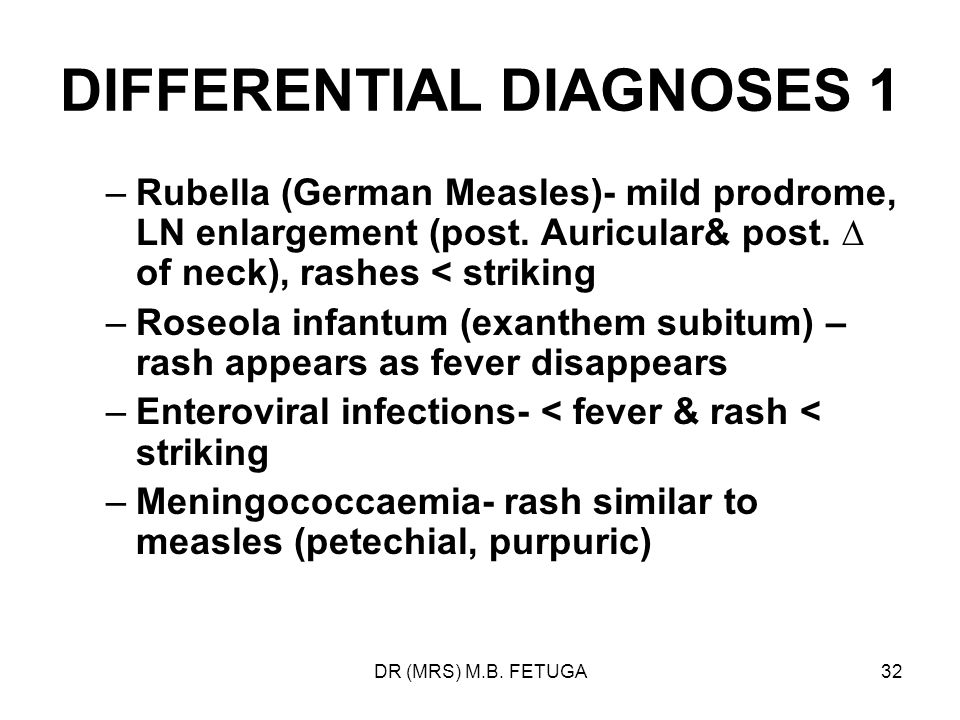
Rubella in Pregnancy: A Serious Concern
While rubella is generally mild in children and adults, it poses significant risks during pregnancy, especially in the first trimester. Maternal infection can lead to congenital rubella syndrome (CRS) in the developing fetus.
Potential Complications of Congenital Rubella Syndrome
- Hearing impairment or deafness
- Vision problems, including cataracts
- Heart defects
- Brain damage
- Developmental delays
- Liver and spleen damage
What should pregnant women do if exposed to rubella? Any pregnant woman who suspects exposure to rubella or develops symptoms should contact her healthcare provider immediately. Prompt evaluation and testing can help determine the risk and guide appropriate management.
Diagnosing Rubella: Tests and Procedures
Accurate diagnosis of rubella is crucial, especially for pregnant women or those planning to become pregnant. While the characteristic rash can suggest rubella, laboratory tests are necessary for confirmation.
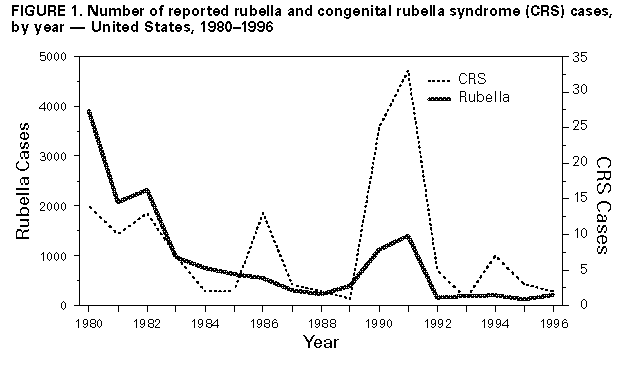
Common Diagnostic Methods
- Serological tests: Blood tests to detect rubella-specific antibodies (IgM and IgG)
- Viral culture: Isolation of the rubella virus from throat swabs or urine samples
- PCR (Polymerase Chain Reaction): Detection of viral RNA in blood, urine, or other bodily fluids
How accurate are rubella tests? Serological tests are highly sensitive and specific, with accuracy rates exceeding 95% when performed at the appropriate time after symptom onset. However, interpretation may be complicated by previous vaccination or past infection.
Treatment and Management of Rubella
There is no specific antiviral treatment for rubella. Management focuses on symptom relief and preventing transmission to others, particularly pregnant women.
Supportive Care Measures
- Rest and hydration
- Over-the-counter pain relievers for fever and discomfort (acetaminophen or ibuprofen)
- Cool compresses for joint pain
- Isolation to prevent spread (stay home for at least 7 days after rash onset)
Can rubella be cured? While there is no cure, the infection typically resolves on its own within 7-10 days in most healthy individuals. However, complications may require additional medical intervention.

Prevention: The Key Role of Vaccination
Vaccination is the most effective way to prevent rubella. The rubella vaccine is typically given as part of the MMR (Measles, Mumps, Rubella) vaccine.
MMR Vaccine Schedule
- First dose: 12-15 months of age
- Second dose: 4-6 years of age
How effective is the MMR vaccine against rubella? The MMR vaccine is highly effective, with two doses providing about 97% protection against rubella. This high efficacy has led to the elimination of rubella in many countries, including the United States.
Importance of Herd Immunity
Maintaining high vaccination rates in the population creates herd immunity, which helps protect those who cannot be vaccinated, such as pregnant women or individuals with certain medical conditions. This community-wide protection is crucial for preventing outbreaks and protecting vulnerable individuals.
Global Impact and Elimination Efforts
Rubella continues to be a public health concern in many parts of the world, particularly in developing countries with limited access to vaccination programs. The World Health Organization (WHO) has set goals for global rubella elimination, similar to efforts against measles.
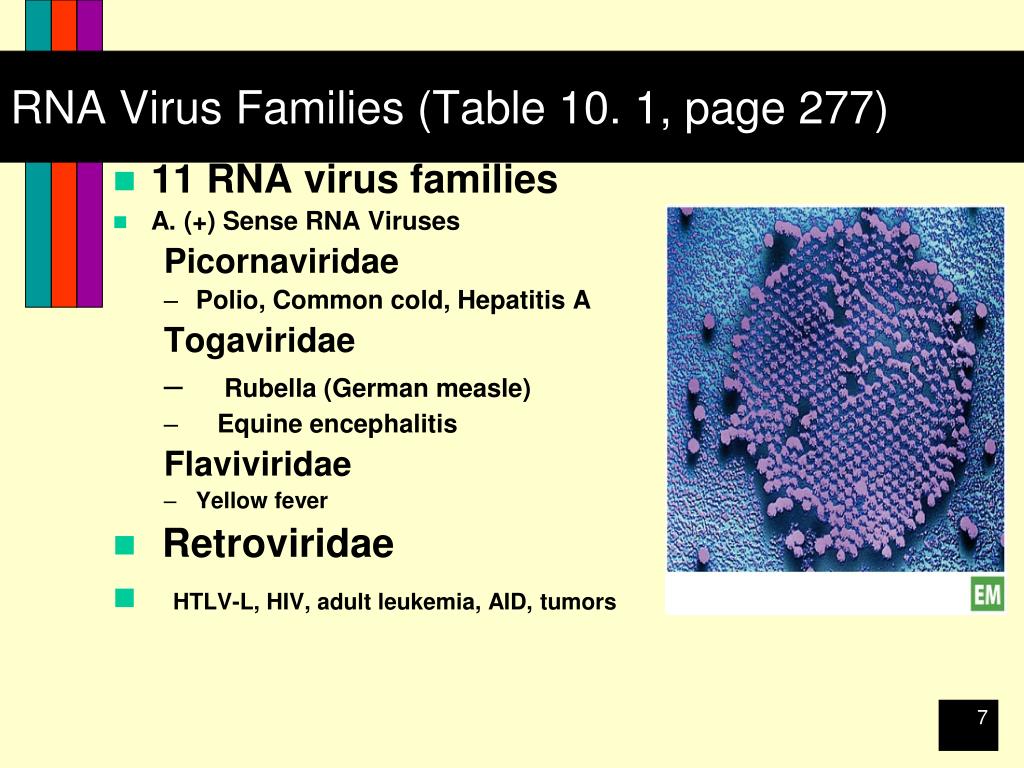
Challenges in Rubella Elimination
- Vaccine hesitancy and misinformation
- Limited access to healthcare and vaccines in some regions
- Difficulties in surveillance and case reporting
- Population movement and potential for importation of cases
What progress has been made in rubella elimination? As of 2020, 93 countries (representing approximately 81% of live births worldwide) have been verified as having eliminated rubella. However, significant work remains to achieve global elimination.
Special Considerations for High-Risk Groups
While rubella is generally mild, certain populations face increased risks of complications or severe outcomes. Understanding these high-risk groups is crucial for targeted prevention and management strategies.
Pregnant Women
As previously discussed, rubella infection during pregnancy can lead to severe consequences for the developing fetus. Pregnant women who are not immune to rubella should take extra precautions to avoid exposure.
Immunocompromised Individuals
People with weakened immune systems, such as those undergoing chemotherapy or with HIV/AIDS, may experience more severe symptoms and prolonged viral shedding if infected with rubella.

Healthcare Workers
Due to their increased risk of exposure, healthcare workers should ensure they are fully vaccinated against rubella to protect themselves and their patients, especially in settings where they may encounter pregnant women.
What precautions should high-risk individuals take? High-risk individuals should ensure they are up-to-date on their vaccinations, practice good hygiene, and avoid contact with people known to have rubella or other infectious diseases.
Rubella in the Modern Era: Challenges and Opportunities
Despite significant progress in rubella control through vaccination programs, several challenges remain in achieving and maintaining elimination status worldwide.
Vaccine Hesitancy and Misinformation
The spread of misinformation about vaccine safety has led to decreased vaccination rates in some communities, creating pockets of susceptibility where rubella outbreaks can occur.
Global Travel and Migration
Increased global mobility can facilitate the spread of rubella from areas where it remains endemic to regions that have achieved elimination status, highlighting the need for continued vigilance and global cooperation.

Surveillance and Reporting
Accurate surveillance and timely reporting of rubella cases are crucial for monitoring elimination efforts and identifying areas where additional interventions may be needed.
How can we address these challenges? Comprehensive strategies involving public education, improved access to vaccines, strengthened surveillance systems, and international collaboration are essential for overcoming these obstacles and moving closer to global rubella elimination.
In conclusion, while rubella has become rare in many parts of the world thanks to effective vaccination programs, it remains a significant public health concern, particularly for pregnant women and in regions with low vaccination coverage. Continued efforts in prevention, surveillance, and global cooperation are crucial to achieving and maintaining rubella elimination worldwide.
Rubella (german measles) – NHS
Rubella (german measles) is a rare illness that causes a spotty rash. It usually gets better in about a week, but it can be serious if you get it when you’re pregnant.
Check if you or your child have rubella
The main symptom of rubella is a spotty rash that starts on the face or behind the ears and spreads to the neck and body.
The rash takes 2 to 3 weeks to appear after getting rubella.
The rash looks red or pink on white skin.
Credit:
PR. PH. FRANCESCHINI/CNRI/SCIENCE PHOTO LIBRARY https://www.sciencephoto.com/media/259748/view
It can be harder to see on brown or black skin, but might feel rough or bumpy.
Credit:
DR P. MARAZZI/SCIENCE PHOTO LIBRARY https://www. sciencephoto.com/media/259492/view
sciencephoto.com/media/259492/view
You might also have lumps (swollen glands) in your neck or behind your ears.
Credit:
DR P. MARAZZI/SCIENCE PHOTO LIBRARY https://www.sciencephoto.com/media/259236/view
Rubella can also cause:
- aching fingers, wrists or knees
- a high temperature
- coughs
- sneezing and a runny nose
- headaches
- a sore throat
- sore, red eyes
Information:
It’s very unlikely to be rubella if you have had both doses of the MMR vaccine or had rubella before.
See other rashes in children and babies
Non-urgent advice: Call a GP if:
- you or your child have symptoms of rubella
Rubella can spread to others. It’s best to call before you go in. The GP may suggest talking over the phone.
It’s best to call before you go in. The GP may suggest talking over the phone.
How to look after yourself or your child
Rubella usually gets better in about a week.
After getting advice from a GP, you or your child should:
- get plenty of rest
- drink lots of fluids, like water or squash
- take paracetamol or ibuprofen if you’re uncomfortable – do not give aspirin to children under 16
How to avoid spreading rubella
Rubella spreads in coughs and sneezes.
It’s infectious from 1 week before the symptoms start and for 5 days after the rash first appears.
It can be serious for some people, so you should try to avoid spreading it to others.
Do
stay off nursery, school, or work for 5 days after the rash appears
try to avoid close contact with anyone who is pregnant
wash your hands often with soap and warm water
use tissues when you cough or sneeze
throw used tissues in the bin
Don’t
do not share cutlery, cups, towels, clothes, or bedding
Rubella in pregnancy
Rubella is very rare in pregnancy. But if you get it when you’re pregnant, rubella could harm your baby.
It can cause:
- loss of the baby (miscarriage)
- serious problems after the baby is born – such as problems with their sight, hearing, heart, or brain
The risk is highest if you get rubella early in pregnancy.
There’s not thought to be a risk to your baby if you get rubella after week 20 of your pregnancy.
Urgent advice: Call your midwife, maternity unit, or GP immediately if:
You’re pregnant and either:
- you have a new rash
- you’ve been in close contact with someone who has rubella
Get vaccinated against rubella
The MMR vaccine can prevent rubella. It also protects you from measles and mumps.
It also protects you from measles and mumps.
The MMR vaccine is offered to all children in the UK. 2 doses can give lifelong protection against measles, mumps, and rubella.
Ask at your GP surgery if you’re not sure you or your child have had the vaccine. They can give it for free on the NHS.
Find out more about the MMR vaccine
Page last reviewed: 23 May 2022
Next review due: 23 May 2025
Rubella (German Measles) (for Parents)
What Is Rubella?
Rubella is an infection that mostly affects the skin and lymph nodes. In kids, rubella — commonly called German measles or 3-day measles — is usually a mild illness. But the infection is dangerous for pregnant women because it can cause serious health problems in their babies.
Rubella is caused by the rubella (roo-BELL-uh) virus (not the same virus that causes measles). It spreads when people breathe in virus-infected fluid.
It spreads when people breathe in virus-infected fluid.
Before the rubella vaccine, epidemics happened every 6-9 years, usually among kids 5 to 9 years old, along with many cases of congenital rubella. Thanks to immunization, there are far fewer cases of rubella and congenital rubella.
What Are the Signs & Symptoms of Rubella?
Rubella infection may begin with 1–2 days of mild fever (99°–100°F, 37.2°–37.8°C) and swollen, tender lymph nodes, usually in the back of the neck or behind the ears. A rash then begins on the face and spreads downward. As it spreads, it usually clears on the face.
The rubella rash is often the first sign of illness that a parent notices. It can look like many other viral rashes, appearing as either pink or light red spots, which may merge to form evenly colored patches. The rash can itch and lasts up to 3 days. As the rash clears, the affected skin might shed in very fine flakes.
Other symptoms of rubella, which are more common in teens and adults, can include headache, loss of appetite, mild conjunctivitis (inflammation of the lining of the eyelids and eyeballs), a stuffy or runny nose, swollen
lymph nodesin other parts of the body, and pain and swollen joints. Many people with rubella have few or no symptoms.
Many people with rubella have few or no symptoms.
The rubella rash usually lasts 3 days. Lymph nodes may be swollen for a week or more, and joint pain can last for more than 2 weeks. Children who have rubella usually recover within 1 week, but adults may take longer.
Is Rubella Contagious?
Rubella is contagious, and passes from person to person through tiny drops of fluid from the nose and throat through sneezing and coughing. Someone also can get it by sharing food or drink with a person who’s infected. People who have rubella are most contagious from 1 week before to 1 week after the rash appears. Someone who is infected but has no symptoms can still spread the virus.
The virus also can pass through a pregnant woman’s bloodstream to infect her unborn child. Babies born with congenital rubella syndrome are at risk for serious problems with their growth, thinking, heart and eyes, hearing, and liver, spleen, and bone marrow. They also can shed the virus in their urine (pee) and fluid from their nose and throat for a year or more, so can pass the virus to people who aren’t immunized against it.
Can Rubella Be Prevented?
The rubella vaccine protects people from the disease. Widespread immunization is the key to preventing the spread of the virus and protecting babies from the serious health problems of congenital rubella syndrome.
Most rubella infections today are in young, non-immunized adults rather than in kids. In fact, experts say that about 10% of young adults are not vaccinated against rubella, which could be dangerous for any children they might have someday.
Children usually get the vaccine at 12–15 months of age as part of the scheduled measles-mumps-rubella (MMR) immunization or measles-mumps-rubella-varicella vaccine (MMRV). Most get a second dose at 4–6 years of age. As with all immunization schedules, there are important exceptions and special circumstances. For example, a child who will travel outside the United States can get the vaccine as early as 6 months of age. Talk to your doctor to see when your child should get the vaccine.
The rubella vaccine should not be given to pregnant women or to a woman who plans to become pregnant within 1 month of getting it. If you are thinking about becoming pregnant, make sure that you’re immune to rubella through a blood test or proof of immunization. If you’re not immune, get the vaccine at least 1 month before you become pregnant.
If you are thinking about becoming pregnant, make sure that you’re immune to rubella through a blood test or proof of immunization. If you’re not immune, get the vaccine at least 1 month before you become pregnant.
Pregnant women who are not immune should avoid anyone who has the illness, then get the vaccine after their baby is born so they’ll be immune during any future pregnancies.
How Is Rubella Treated?
Antibiotics can’t treat rubella because they only work against bacteria, not viruses. Unless it causes other problems, rubella will get better on its own. Rubella usually is mild in kids, who often can be cared for at home. Check your child’s temperature and call the doctor if the fever climbs too high.
To ease minor discomfort, you can give your child acetaminophen or ibuprofen. Never give aspirin to a child who has a viral illness, as such use is linked to a serious condition called Reye syndrome.
When Should I Call the Doctor?
Call the doctor if your child seems to be getting sicker or has symptoms that don’t seem mild.
If a pregnant woman is exposed to rubella, she should contact her doctor right away.
Rubella: symptoms, treatment and prevention
Prevalence
Rubella is an acute infectious disease of viral etiology. Rubella is considered a benign infection and is usually mild, affecting mostly young people or children.
However, rubella is one of the most serious diseases for pregnant women, because if the disease leads to the development of congenital malformations of the fetus, which are grouped under the “classic congenital rubella syndrome”.
Rubella is a contagious disease that infects, according to WHO, from 40 to 90% of non-immune (unvaccinated) contacts, depending on the activity of immunity. The virus is transmitted by coughing, sneezing and breathing. This route of transmission is called airborne. The carrier is only a person. The virus is extremely unstable in the external environment and spreads mainly in close communities and collectives.
Another good news is that the World Health Organization at the beginning of 2019issued the Ministry of Health of the Russian Federation an official certificate of the complete eradication of rubella in the Russian Federation. This is recognition of the great preventive and educational work carried out in relation to infectious diseases in our country.
Symptoms
In children and adolescents, as a rule, the disease has a mild course, rarely causes complications and does not have any other features of the course. After infection, the virus enters the blood and regional lymph nodes, as well as the organs of the respiratory system, where it multiplies. This period averages 15-24 days. First symptoms: headache, fever up to 39and swelling of the posterior and occipital lymph nodes, their soreness when pressed. Then pharyngitis occurs and symptoms of conjunctivitis develop, including photophobia and lacrimation. Pain on palpation (pressure) of the posterior cervical and occipital lymph nodes is a hallmark of rubella. A rash develops two days later. The rash looks like spots, but only appears in 60-80% of cases. Spots with rubella do not itch or itching is slight, almost imperceptible – this is also important to consider. Spots (macula) first appear on the face and behind the ears, reminiscent of the measles rash (see Measles), but “fall” over the body much faster in many cases, and flexor surfaces and natural skin folds such as buttocks, lower back, elbows and knees. Such a picture lasts on average up to 5, rarely 7 days and disappears without a trace, leaving no peeling or pigmentation behind. Until the last day of the rash, the patient is considered contagious, so it is necessary to limit the person from contact with others for the entire period of the disease.
A rash develops two days later. The rash looks like spots, but only appears in 60-80% of cases. Spots with rubella do not itch or itching is slight, almost imperceptible – this is also important to consider. Spots (macula) first appear on the face and behind the ears, reminiscent of the measles rash (see Measles), but “fall” over the body much faster in many cases, and flexor surfaces and natural skin folds such as buttocks, lower back, elbows and knees. Such a picture lasts on average up to 5, rarely 7 days and disappears without a trace, leaving no peeling or pigmentation behind. Until the last day of the rash, the patient is considered contagious, so it is necessary to limit the person from contact with others for the entire period of the disease.
We will separately consider the course of pregnancy and the consequences for the fetus. In 90% of cases, if a pregnant woman gets rubella, she will pass the virus on to her fetus. In the early stages of pregnancy, mainly in the first trimester, this threatens with miscarriage, stillbirth, and at later stages, congenital severe malformations can develop, which are called the “classic congenital rubella syndrome”.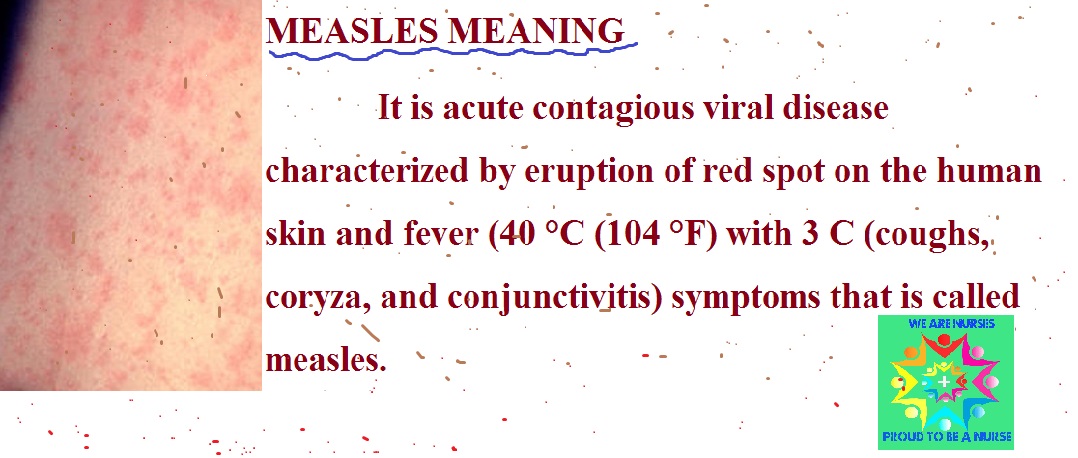 The syndrome combines a number of specific symptoms, among which are congenital deafness, congenital keratitis, congenital diabetes mellitus, thyroid damage (its dysfunction), malformations of the heart and brain, for example, autism. The survival rate of such children is very low, and the treatment is long and expensive.
The syndrome combines a number of specific symptoms, among which are congenital deafness, congenital keratitis, congenital diabetes mellitus, thyroid damage (its dysfunction), malformations of the heart and brain, for example, autism. The survival rate of such children is very low, and the treatment is long and expensive.
Diagnosis
Clinical diagnosis can be made on the basis of a fairly specific clinical picture, according to the results of a complete clinical blood test and an analysis for specific immunoglobulin M. Diagnosis is carried out by an infectious disease specialist, and treatment is also prescribed only by a doctor. Self-medication can aggravate the course of the disease.
Treatment and prevention
The main method of prevention is vaccination, which is carried out with a combined live vaccine (together with measles and mumps). The vaccine, according to the National Immunization Schedule of the Russian Federation (you can see it on here ) is held at 12 months and six years.
Treatment includes symptomatic relief, which includes guard bed rest, low-calorie and fiber-rich foods. Non-steroidal anti-inflammatory drugs are used to reduce fever and reduce headaches.
References:
1. World Health Organization. Rubella. 2018. https://www.who.int/ru/news-room/fact-sheets/detail/rubella
2. Ed. Timchenko V.N. Infectious diseases in children. SPB: SpecLit. 2012.
in children and adults, symptoms, photos, vaccination
|
What is rubella
Rubella is a viral infection.
Rubella is often confused with rubella measles. It is important to know that rubella is a manifestation of measles; rubella is an independent disease. Measles and rubella are caused by different viruses.
The prevalence of rubella depends on the vaccination of the population in a particular region. With a high level of vaccination (80-90% of the population), rubella practically does not occur.
Rubella is transmitted from a sick person to a healthy person by airborne droplets: through mucus and saliva when sneezing, coughing, etc.
In most cases, rubella is mild and without complications. Symptoms of rubella – fever up to 38 degrees, headache, pharyngitis, conjunctivitis, swollen lymph nodes on the back of the head and back of the neck, spotty, not itchy pink rash on the face, on the lower back and buttocks in the form of small spots.
Rubella only affects the fetus when infected in the first trimester of pregnancy (congenital rubella). Due to congenital rubella, the fetus may develop congenital deafness, eye damage, and congenital heart disease (Greg’s triad). The risk to the fetus decreases with increasing gestational age. When the mother is infected at 1 month of pregnancy, the risk to the fetus exceeds 50%; at 3 months of pregnancy – less than 20%; after 4 months of pregnancy, the risk to the fetus is less than 10%.
The risk to the fetus decreases with increasing gestational age. When the mother is infected at 1 month of pregnancy, the risk to the fetus exceeds 50%; at 3 months of pregnancy – less than 20%; after 4 months of pregnancy, the risk to the fetus is less than 10%.
Rubella is diagnosed by a family doctor, pediatrician, internist, infectious disease specialist on the basis of an examination and a blood test (enzyme immunoassay).
There is no specific treatment for rubella – the disease resolves on its own in 2-7 days. Paracetamol is recommended to alleviate the symptoms of rubella.
After illness, the patient develops a strong immunity to rubella – cases of re-infection are extremely rare.
Prevention of rubella consists of vaccinating children with a combination vaccine against rubella, measles and mumps. The first vaccination is performed at 12 months; revaccination is carried out at 6 years.
Causes and routes of transmission of rubella
Rubella is caused by the Rubella virus, which belongs to the family Togaviridae, genus Rubivirus.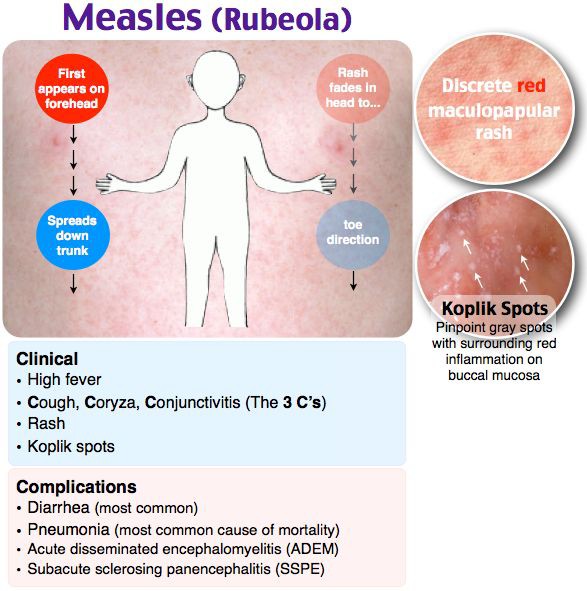 The virus dies when the ambient temperature rises to 50-60 degrees, so rubella is more likely to get sick in the cold period: November-March.
The virus dies when the ambient temperature rises to 50-60 degrees, so rubella is more likely to get sick in the cold period: November-March.
Due to the high contagiousness of the virus, outbreaks occur in crowded places: kindergartens, schools, boarding schools, etc. within 14 days: 1 week before rash + 1 week after rash.
Symptoms of rubella in children and adults
The incubation period (from infection with the virus to the appearance of clinical signs of rubella) lasts 15-25 days.
In 40% of cases, rubella is asymptomatic or with minor symptoms resembling mild SARS.
Rubella can be congenital or acquired.
Congenital rubella is the result of maternal infection during the first 3 months of pregnancy. As mentioned above, congenital rubella provokes Greg’s triad: congenital deafness, congenital heart disease and eye damage (cataract). A rarer complication of congenital rubella is microcephaly.
Acquired rubella is a consequence of infection with the rubella virus in childhood and adulthood.
The clinical manifestations of acquired rubella in children and adults are very similar. Here are the symptoms of acquired rubella:
- fever up to 38 degrees, headache – the first manifestations of rubella;
- phenomena of pharyngitis and conjunctivitis;
- pain in the muscles of the arms and legs;
- lymphadenopathy – enlargement of the occipital and posterior cervical lymph nodes;
- rash on the face, lower back, buttocks, extensor surfaces of arms and legs, which appears 2 days after fever. The rash with rubella is macular – in the form of small (compared to measles) non-merging, non-itchy pink spots.
The rash stays for 2-7 days, after which it disappears within 2-5 days without peeling, leaving no traces.
Diagnosis of rubella
Rubella is diagnosed by a family doctor, pediatrician, internist, infectious disease specialist based on complaints, external examination and laboratory tests.
External examination reveals a characteristic rash and enlargement of the occipital and posterior cervical lymph nodes. The doctor must distinguish the rash with rubella from that with measles, chickenpox, scarlet fever.
The doctor must distinguish the rash with rubella from that with measles, chickenpox, scarlet fever.
Laboratory blood test – enzyme immunoassay (ELISA). With ELISA, specific serum antibodies and an increased level of immunoglobulin M are detected. In a general blood test, a decrease in the number of leukocytes (leukopenia) and an increase in the number of plasma cells (plasmocytosis) are determined.
Rubella treatment
There is no specific treatment – the disease goes away on its own.
Paracetamol is prescribed for severe symptoms.
Sparing, but at the same time full-fledged nutrition with a predominance of fruits and vegetables is shown; plentiful drink. Food is prepared by boiling and steaming.
Rubella prophylaxis – rubella vaccination
If rubella is detected, the patient is isolated until the rash has completely disappeared; first of all, the patient is isolated from pregnant women.
Specific rubella prophylaxis – inoculation with a live combined measles, rubella and mumps vaccine.
